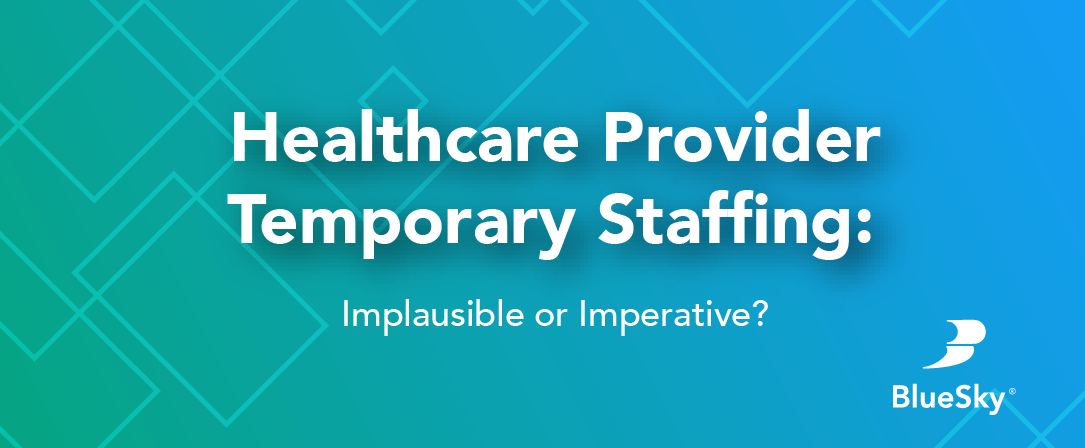Let’s be honest, future healthcare provider financial projections are not pretty. Drastically reducing the highest top line costs to secure future financial solvency is key, and temporary staffing is ostensibly the item zero in on.
Due to the systemic shift in how the workforce now views employment, simply reducing temporary labor costs is wrought with complexity. The real solution is empowering healthcare providers to take back control.
At the height of the pandemic, the temporary staffing industry received nationwide publicity heard by nurses around the world. There is no amount of money that temporary staffing agencies could have spent to get that kind of national exposure.
Media outlets described incredible earning potential for nurses willing to travel, even claiming a traveler could make as much in six months as they could in a year at their existing job. Travel nurses became crucial to enabling hospitals to rapidly address the unanticipated surge of very sick patients without adequate staffing.
Based on data published in January 2023, healthcare providers with the highest annual temporary staffing spend allocated an average of 2.23% of operational budgets to cover these costs. 2.23% might seem low, but the numbers tell a different story. 2.23% translates to an average $465M in annual spend. The healthcare provider spending the most on temporary staffing? $3.14B.
Now, employing travel nurses, the heart of healthcare providers, the very beat keeping them alive, is simultaneously flatlining budgets. Despite letters to the White House decrying unsustainable costs, not much has really changed.
Two new realities exist that were barely evident pre-pandemic have come roaring to the forefront of the mind of healthcare providers – a nursing workforce educated on, and seeking, traveler benefits AND healthcare providers left unable to sustainably fund demand.
Randomly querying a group of full-time nurses regarding general information about a traveler during pre-pandemic times would result in starkly different responses received today.
READ: Where are all the Nurses
Prior to the pandemic, most commonly the answer would be “yeah I know they are here with us, and I know they do make more than us, but their jobs are only temporary, and they have to leave their homes for months at a time.”
Today, a random survey of full-time nurses would provide a completely different answer, such as, “yeah, they make way more $$ a week than I do, can take off a large part of the year and still make as much as they would in a full-time role every year. I wish I could do it.”
New career choices have been etched into the minds of every working nurse.
NOW FOR THE BIG HURDLE
Media education of the populace has created an environment whereby nurses are asking, “if you are willing to pay these travelers twice as much, why aren’t we equally as valuable?” Which poses the question to healthcare providers, “what is the balance between the financial viability of a system versus the cost of labor?”
Historically, healthcare providers competed in local markets for talent against same market systems. Now, and in the future, the competition is be against the providers of talent from the “gig” workforce. At some point, the market will determine the value of a nurse to an organization. The current system is not designed to match care to reimbursement, and as such will continue to put downward pressure on earnings. Believing spend will return to pre-pandemic levels is naïve at best.
A paradigm shift is needed to bring labor costs in line with reimbursements. The old adage really applies in this example, “if we keep doing what we are doing, we will continue to get the same results.” There is a way out, but not without a new driver in market forces. As in other market forces, technology will be the key.
Source:
ABOUT THE AUTHOR
 Tim Teague
Tim Teague
President, BlueSky Synergy
{% icon icon_set=”fontawesome-5.14.0″ name=”LinkedIn” style=”REGULAR” height=”28″ purpose=”decorative” title=”LinkedIn icon” %} {% icon icon_set=”fontawesome-5.14.0″ name=”Envelope” style=”SOLID” height=”30″ purpose=”decorative” title=”Envelope icon” %}
Tim is a thought leader in the contingent labor market place. His latest technology approach takes advantage of hospitals developing their own “gig” workforce. This technology is similar to what staffing agencies have enjoyed for years.


